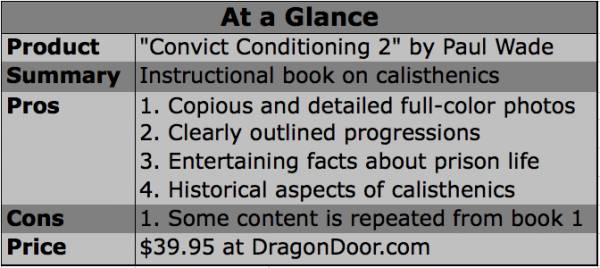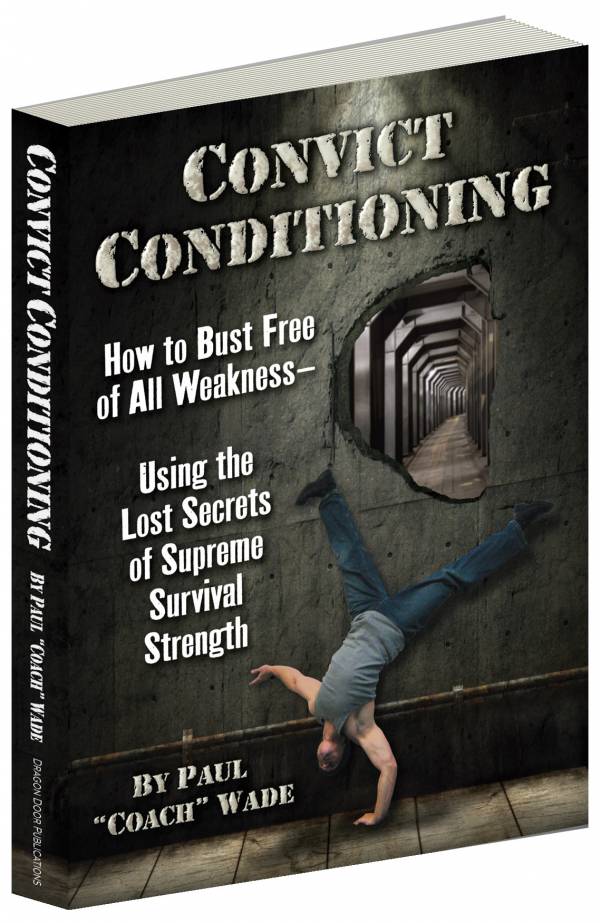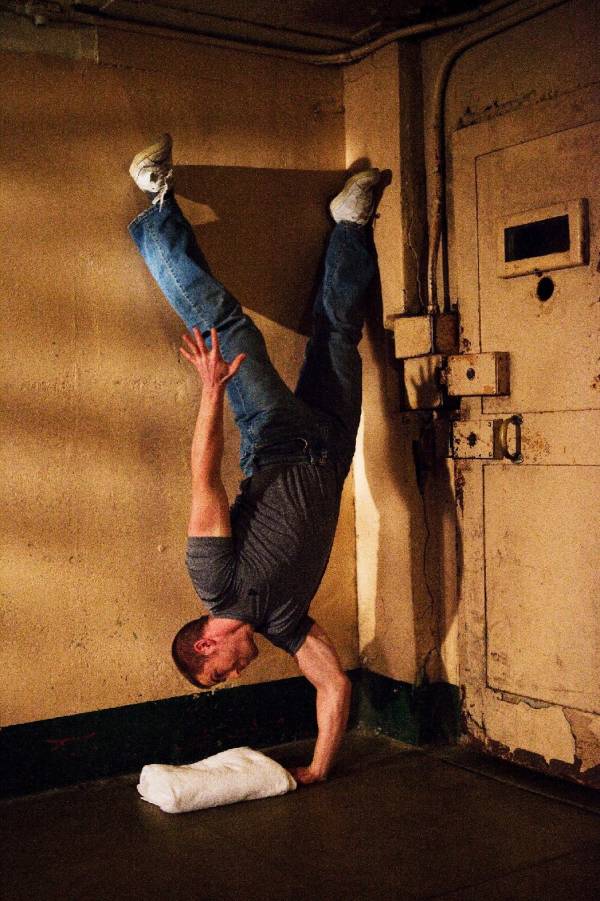
Who would have thought prisons would be the last bastions of true fitness? This is the idea put forth by Paul Wade in his books Convict Conditioning and Convict Conditioning 2. Wade’s story is a unique one, in and of itself. If you’ve read some of the Convict Conditioning story excerpts that we’ve featured on Breaking Muscle, then you know he is a nearly twenty-year veteran of the penal system. He learned about bodyweight exercises and calisthenics from the professionals – hardcore convicts without access to equipment.
 In a strange twist of fate, while the outside world evolved gyms into body-building based, non-athletic endeavors, those inside prison walls had no choice but to rely on their bodies and basic, minimal equipment to get strong. According to Wade they are the ultimate proof that calisthenics and old-school exercises work.
In a strange twist of fate, while the outside world evolved gyms into body-building based, non-athletic endeavors, those inside prison walls had no choice but to rely on their bodies and basic, minimal equipment to get strong. According to Wade they are the ultimate proof that calisthenics and old-school exercises work.
In the first Convict Conditioning book Wade focused on the six fundamental strength movements (push up, squat, pull up, leg raise, bridge, handstand push up), as well as the associated progressions and variations. In this second installment, the focus is “strength-calisthenics” and some of the more peripheral parts of the athlete’s body.
In the first section of Convict Conditioning 2, Wade addresses:
- Forearm Strength
- Grip Types and Progressions
- Fingertrip Push Ups
- Flag Types and Progressions
- Neck Strength and Bridges
- Calf Training
In section two Wade goes on to talk about “bulletproofing” your joints, mobility, flexibility, and what stretching actually consists of. He gives detailed instruction on how to strengthen up your joints and tendons in a healthy way, while also building flexibility. He outlines a plan for developing mobility in your body addressing all three areas – anterior, posterior, and lateral – so that your body is balanced, not just in strength, but also in stretching.
At this point Wade goes into detail about various holds he recommends for prehab/rehab:
 Bridge Holds
Bridge Holds- L-Hold Progressions
- Twist Progressions
In section three of the book Wade ventures outside the gym, but still sources the prison for expertise. Here Wade discusses aspects that contribute greatly to the success of training, but are often overlooked as factors – sleep, stress, drugs (although most of us won’t ever be offered “pruno”), and alcohol. Wade also delves into nutrition, complete with a prison-based meal plan. To wrap up this section he discusses tactics for healing from injury and basic mental skills to keep your mind in the strength game.
One of the plusses about the book’s layout are the pages clearly outlining the progressions for the movements. The order of exercises are listed, as well as the pages in the book where they are explained. The book is clearly illustrated and in great detail, with hundreds of full-color photographs. Wade also intersperses stories of his prison life throughout the book, which also add a bit of “color.” On the other hand, if you’ve read the first book, you might feel like you’ve read some of this same material, but the organization of the book makes it easy for you to skip ahead.
If you’re a hard core calisthenics fan or just a regular person looking to add some solid, bodyweight movements to your protocol, this book would be a great addition to your library. I enjoyed reading through this book for all of the following reason: Paul Wade’s vast technical knowledge, finding a variety of progressions and movements to work into my own exercise routine, and the entertainment and education of Wade’s prison stories.
Convict Conditioning 2 is available at Dragondoor.com for $39.95.
The original Convict Conditioning is also available at Dragondoor.com for $39.95.
You can also read Paul Wade’s prison story or try three weeks of his workouts.






